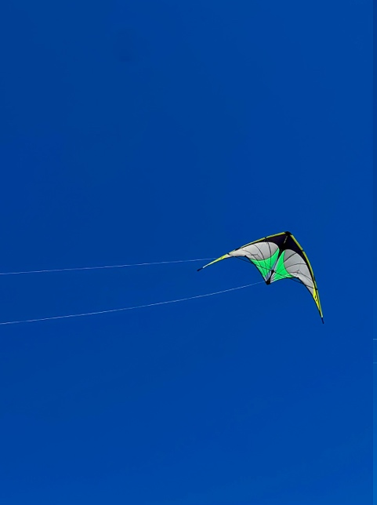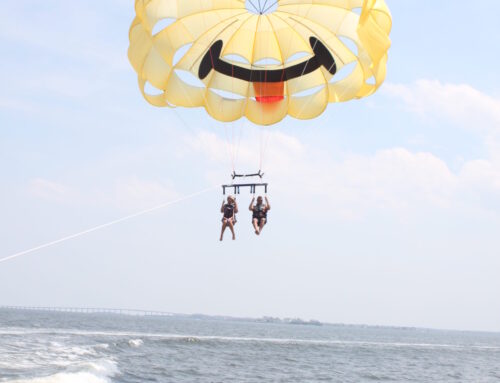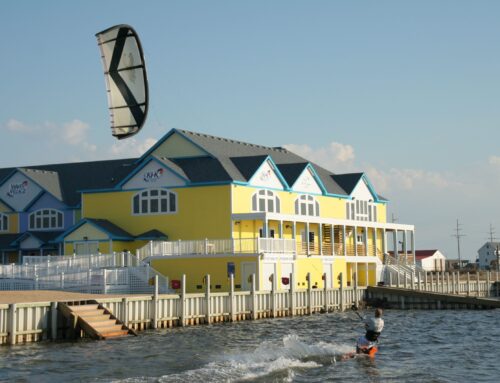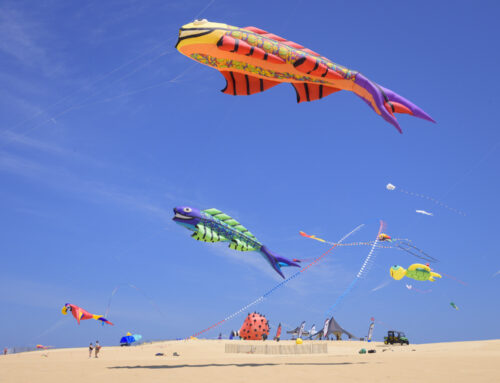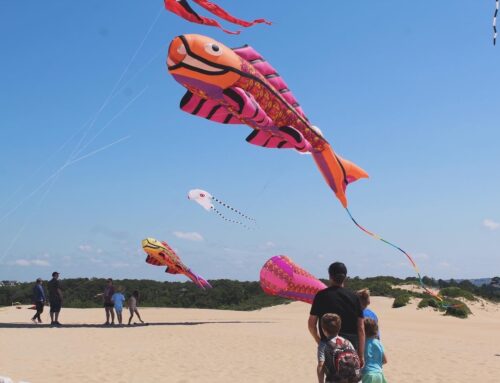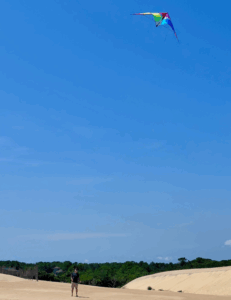
It’s a hot, cloudless day at Jockey’s Ridge State Park, where deep blue meets pale gold along the rolling horizon of sand dunes. A steady 15 mph wind with 20 mph gusts makes the 90-degree heat feel a bit less intense. Maddie Sasser, a 21-year-old stunt kite instructor, carries a long bag as we head to a spot where the wind will be at our backs.
She unfurls the bag to reveal a collection of colorful stunt kites — high-performance, dual-line kites built for sharp turns, spins, and dives. Made from lightweight materials and shaped for speed, they respond to the smallest hand movements.
“I had an 11-year-old doing spins” Maddie says after I admit I’d never heard of stunt kite flying until a few days ago. “It’s such an underrated, accessible activity — we get kids to retirees.”
She lays out a rainbow-colored Prism Quantum, described as beginner-friendly yet high-performing, and connects its frame. The design is crash-resistant and will come apart rather than break at impact — for this novice, a relief to hear.
With the Quantum held in place by a few scoops of sand, Maddie backs up over 100 feet, unspooling the lines. With her elbows tucked at her waist, she takes a few large steps back. The kite lifts into the sky, the wind rippling through its wings with a hum like an outboard motor. She barely moves her arms, yet the kite turns left, then right, then dances — spinning, diving, and soaring. Nearby, a child’s delighted squeal carries over the dunes.
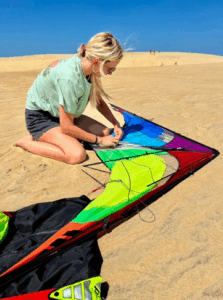
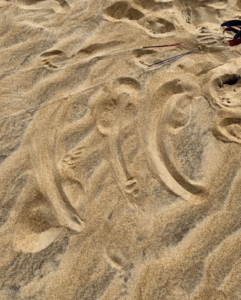
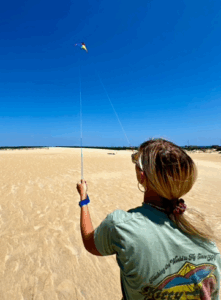
Left to Right: Instructor Maddie Sasser assembles the Prism Quantum stunt kite; flight plan in the sand — the middle line represents the height with the strongest wind, requiring the most control as the kite ascends; Maddie steadies the stunt kite. (Credit: Brian Tress)
Next, it was my turn. Maddie handed me the lines and said, “The instinct to over-correct is huge with beginners. The trick is to relax — little movements — you’re in control.” She reset the kite, and as she let it go, I stepped back and felt the tug of wind — it was airborne!
Seconds later, it crashed in a high-speed nosedive, coming apart on impact. It took several failed launches before I started to settle in. I relaxed my arms, and the kite began to feel like something alive. When the wind pulled it left, I eased my right hand back an inch — it corrected. When it pitched in a gust, I steadied it like a bucking bronco.
Eventually, I attempted a spin — but immediately reverted to a panicked tug that sent the kite into another nosedive. When it finally did spin, skimming the sand with a wingtip, Maddie cheered, “That was beautiful!” I didn’t have the heart to tell her it was a complete accident.
After flying one more kite — a bright green Prism Nexus, lighter and faster than the Quantum — we returned to Kitty Hawk Kites, pleasantly tired, sun-drenched, and dusted with sand.
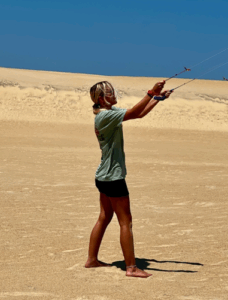
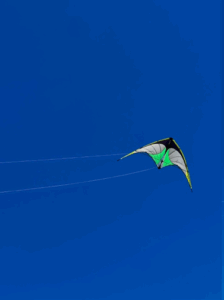
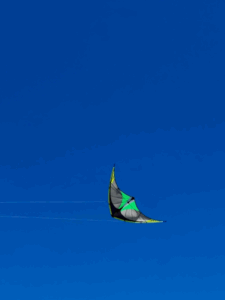
Maddie flies loops with the Prism Nexus stunt kite. (Credit: Brian Tress)
On reflection, it’s easy to see how stunt kite flying can become addictive — there’s no steep learning curve, you don’t need to be a triathlete, and the only gear required is the kite itself, which is a modest investment compared to big-ticket items like hang gliders or surfboards. Many models at Kitty Hawk Kites sell for under $100.
There’s also something quietly magical about it — where a tug on the line feels like a message from the wind: come dance with me.
Written and crafted by Brian Tress
🪁 Ready to Fly? Learn More About Kite Lessons!
🛍️ Shop the Newest Kites & Accessories Now!
